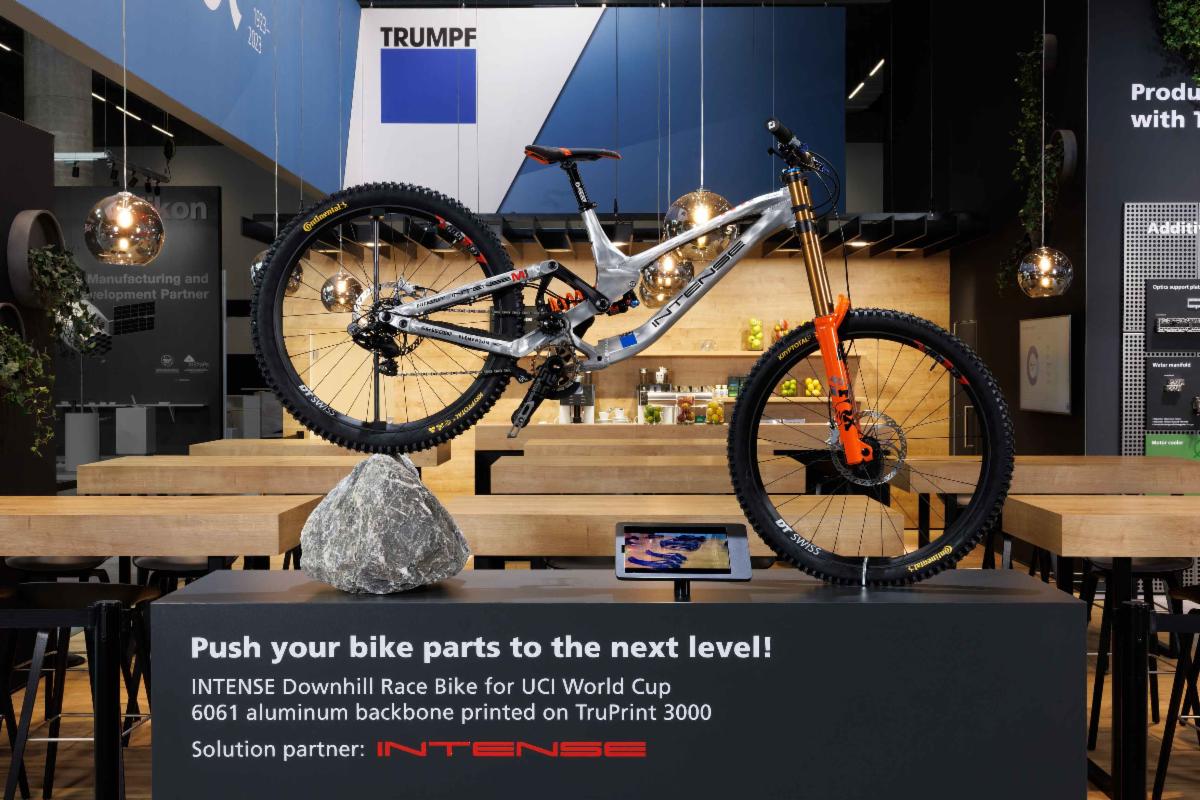Additive manufacturing, also known as 3D printing, is becoming increasingly important in the bicycle industry, as the latest project from INTENSE Cycles shows. In collaboration with Elementum 3D and TRUMPF Inc., INTENSE has developed a new type of bicycle frame for its legendary M1 downhill racing bike. This innovation underscores the growing role of 3D metal printing in prototyping and producing groundbreaking components.
INTENSE, a leader in the bicycle industry for three decades, has made a name for itself with high-quality carbon and aluminum frames.
INTENSE Founder and CEO Jeff Steber is a designer, artist, and craftsman with a hands-on approach. He’s enthusiastic about integrating AM into bike frame and part production. “I work and ‘think’ in aluminum, so AM opens a new world of creative opportunities for me and my team,” he said. “We say INTENSE merges artistry and engineering, and I am no longer limited to metal sheets and tubes. I have the freedom to create almost any shape I want.”
The redesign of the M1 frame, a model that has been outperforming competitors since the mid-1990s, was achieved by using 6061 aluminum. The innovative design with internal bracing, which would not be feasible with traditional machining techniques, optimizes the performance of the bicycle suspension while reducing weight.
Christian Lengwenat, TRUMPF application engineer for metal 3D printing, was pleased with Elementum 3D’s involvement, stating, “Elementum 3D is professional and responds quickly. It’s comforting to work with a reliable, friendly group. Their advanced material properties and surface finish exceeded our expectations, and we plan to use more Elementum 3D powders in our machines.”
By partnering with TRUMPF and using Elementum 3D’s A6061-RAM2 alloy, INTENSE was able to realize the new frame. TRUMPF’s experience in 3D printing bicycle parts and ability to print parts from the weldable 6061 aluminum was critical to the success of the project. The collaboration led to an optimization of the printing process and material selection, which shortened the production time and increased the quality of the printed parts.
The successful implementation of the 3D printed frame not only changed the way INTENSE produces, but also improved the performance of the M1 in competition. The bike took 2nd place at the 2023 UCI Cycling World Championships, and based on this success, INTENSE plans to integrate additive manufacturing into future prototyping projects and other production components.
Steber remarked, “I’m thankful for the great work TRUMPF and Elementum 3D provided. Their guidance and expertise played a critical role in successfully producing our new M1. I am happy to report the M1 finished 2nd at the 2023 UCI Cycling World Championships.”
This project impressively demonstrates how additive manufacturing enables the development of innovative and more efficient products and overcomes the limitations of traditional manufacturing methods. It underlines the importance of collaboration between materials scientists, engineers and manufacturers to fully exploit the potential of 3D printing and set future production standards.
Subscribe to our Newsletter
3DPresso is a weekly newsletter that links to the most exciting global stories from the 3D printing and additive manufacturing industry.






















